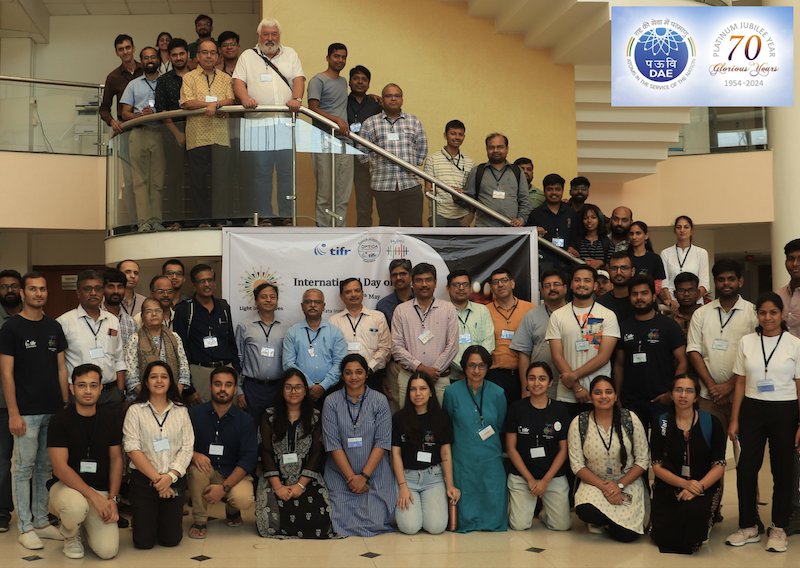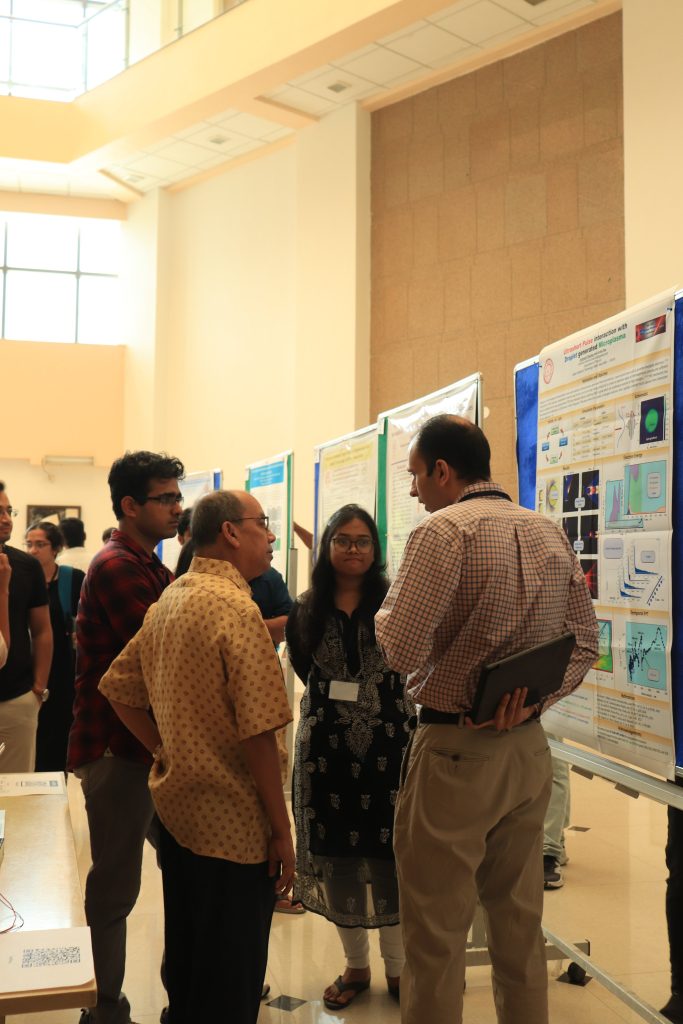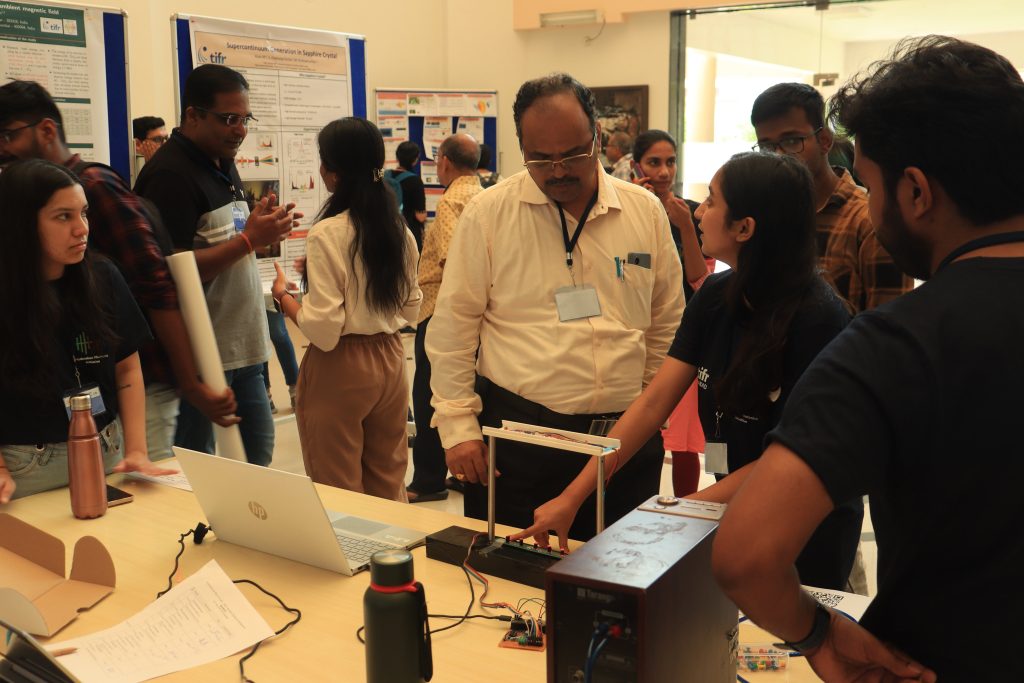International Day of Light – Nuclear Photonics Symposium
Nuclear Photonics is a rapidly evolving area of research propelled by the advent of laser-driven brilliant quasi–monochromatic Compton sources to MeV energies and their ability to excite and manipulate the nucleus. Similar to the revolution in the atomic spectroscopy, these MeV photon sources will be used in exploring the nuclear spectroscopy. On the occasion of International Day of Light and to commemorate 70 year Platinum Jubilee celebrations of Department of Atomic Energy, Tata Institute of Fundamental Research (TIFR) Hyderabad together with Hyderabad Photonics Initiate (HyPhI) organized a ‘Nuclear Photonics Symposium’ during May 15-17, 2024.

This symposium covered different areas such as laser–plasma nuclear physics, gamma-ray science near giant dipole resonance, high intensity laser–plasma interactions, non-destructive material imaging, and photon-enabled pulsed neutron generation. This event celebrated the institute’s spirit of interdisciplinary approach by bringing together researchers from the fields of nuclear physics and photonics under one roof. The symposium was preceded by a public outreach event organized by the TIFR Network of Students (TIFR NeSt), the outreach activities included interactive demos, laboratory tours, and a public lecture on the legacy of the founding director of TIFR, nuclear physicist and visionary, Dr. Homi J. Bhaba. One of the special attractions during the outreach activities was the Laser Harp, a laser-based musical instrument developed in-house by TIFR NeSt and thoroughly enjoyed by all the participants from various target groups.
The thematic symposium brought together more than 65 participants including national as well as international experts in Nuclear Physics as well as Photonics. Prof. Chris Barty from the University of California, Irvine USA, spoke about ‘Compton Sources’ and varied applications in active detection of shielded radioactive materials, medical imaging and cancer diagnosis. While Prof. Amita Das from Indian Institute of Technology Delhi, presented novel laser energy absorption mechanisms, Prof. Sudip Sengupta, Institute of Plasma Research, Gandhinagar, discussed the role of photonics and intense lasers in plasma driven wake-field acceleration achieved by breaking of relativistically intense plasma waves. Prof. D. L. Balabanski and Prof. Ioan Danus from Horia Hulubei National Institute of Physics and Nuclear Engineering, Romania, highlighted the unique features of the Extreme Light Infrastructure – Nuclear Physics facility in Romania and its applications along with their journey towards successful operation of the 10 PW laser. This interdisciplinary symposium was actively participated by graduate students working in both the arenas from all over the country. The insightful lectures, interactive poster sessions and laboratory visits not only provided academic training but also networking opportunities for the participants.


Further, the symposium hosted a panel discussion on joint efforts at the emerging interface between nuclear physics and photonics to make TIFR Hyderabad, a unique place for cutting edge research on light matter interaction science. The upcoming state-of-the art Peta-watt laser facility will further enhance our understanding of fundamental properties of matter and high-energy-density physics.
To this extent, Prof. Rudrajyoti Palit, TIFR Mumbai discussed the possibility of forming a working group of experimental nuclear physicists and propose experimental plans with the Peta-Watt laser. On the other hand, a theoretical working group led by Prof. Amita Das, will work towards training manpower and creating infrastructure to perform simulationsin support of the experiments conducted at the PW laser facility making India self-reliant, minimizing/alleviating our current dependence on international facilities.
Content: Chaitanya K Suddapalli, Srushti Chipde and Sruthi Varier
